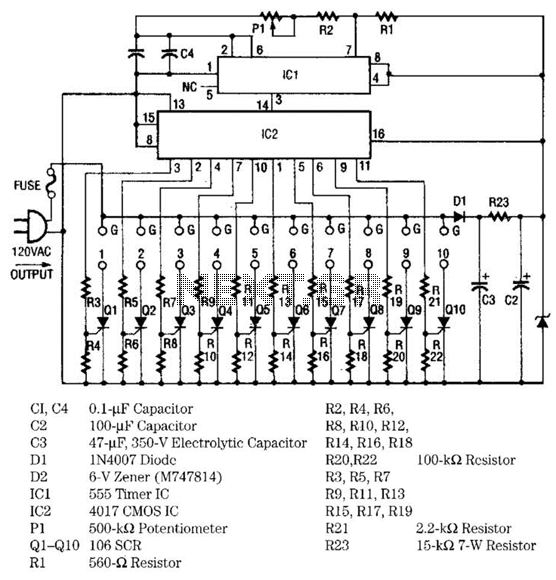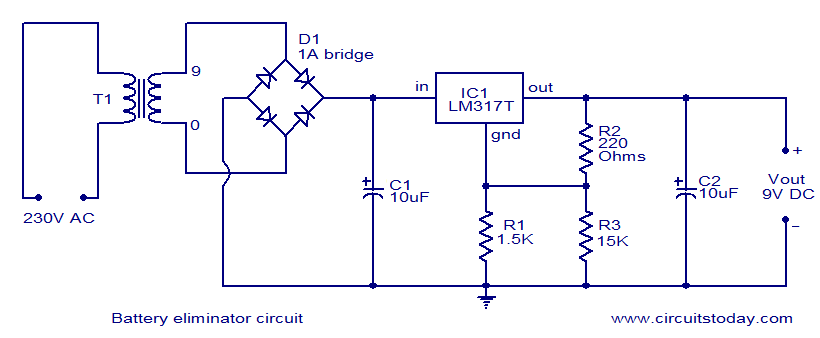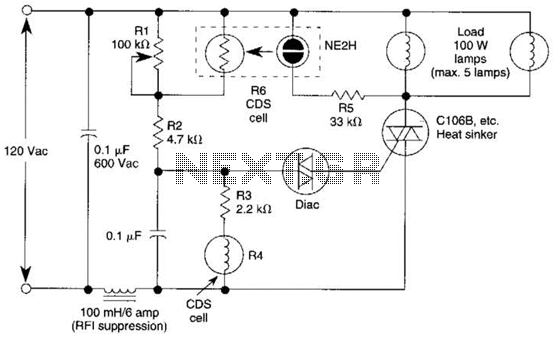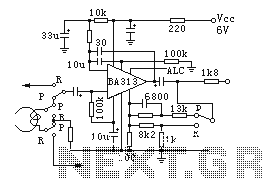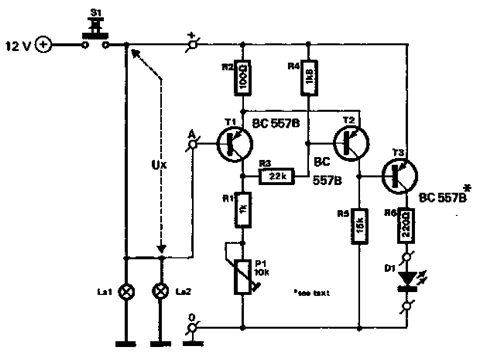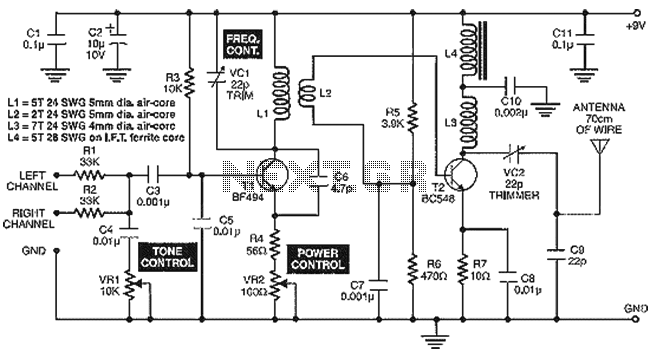
Ultrasonic drilling machine circuit diagram 2

The ultrasonic drilling machine circuit consists of a power supply circuit, an ultrasonic oscillator circuit, a preamplifier, a promoting amplifier circuit, and a power amplifier output circuit, as depicted in the accompanying diagram. The ultrasonic oscillator circuit is made up of resistors R1 to R4, transistor V1, capacitors C1 to C4, and an inductor L. The preamplifier circuit includes...
The ultrasonic drilling machine operates by utilizing high-frequency sound waves to facilitate drilling processes. The power supply circuit provides the necessary voltage and current to the entire system, ensuring stable operation. This circuit typically includes voltage regulators and filtering components to maintain a consistent output.
The ultrasonic oscillator circuit is the heart of the system, generating the high-frequency signals required for ultrasonic drilling. It employs a combination of resistors (R1 to R4), which determine the frequency and amplitude of the oscillations, and a transistor (V1) that acts as a switch to control the flow of current. Capacitors (C1 to C4) are used for tuning and stability, while the inductor (L) helps in shaping the oscillation waveform.
Following the oscillator, the preamplifier circuit boosts the weak signals produced by the ultrasonic oscillator. This stage is critical for ensuring that the signals are strong enough for further amplification. The promoting amplifier circuit then takes these signals and amplifies them further, preparing them for the final power amplification stage.
The power amplifier output circuit is responsible for driving the ultrasonic transducer, which converts electrical signals into mechanical vibrations. This stage must be designed to handle high power levels while maintaining efficiency and stability. Overall, each component in the ultrasonic drilling machine circuit plays a vital role in ensuring the effective generation and application of ultrasonic energy for drilling applications.The ultrasonic drilling machine circuit is composed of power supply circuit, ultrasonic oscillator circuit, preamplifier, promoting amplifier circuit and power amplifier output circuit, and the circuit is shown as the chart. Ultrasonic oscillator circuit consists of resistors R1 ~ R4, transistor V1, capacitors C1 ~ C4 and inductor L.
Preamplifier circuit con.. 🔗 External reference
The ultrasonic drilling machine operates by utilizing high-frequency sound waves to facilitate drilling processes. The power supply circuit provides the necessary voltage and current to the entire system, ensuring stable operation. This circuit typically includes voltage regulators and filtering components to maintain a consistent output.
The ultrasonic oscillator circuit is the heart of the system, generating the high-frequency signals required for ultrasonic drilling. It employs a combination of resistors (R1 to R4), which determine the frequency and amplitude of the oscillations, and a transistor (V1) that acts as a switch to control the flow of current. Capacitors (C1 to C4) are used for tuning and stability, while the inductor (L) helps in shaping the oscillation waveform.
Following the oscillator, the preamplifier circuit boosts the weak signals produced by the ultrasonic oscillator. This stage is critical for ensuring that the signals are strong enough for further amplification. The promoting amplifier circuit then takes these signals and amplifies them further, preparing them for the final power amplification stage.
The power amplifier output circuit is responsible for driving the ultrasonic transducer, which converts electrical signals into mechanical vibrations. This stage must be designed to handle high power levels while maintaining efficiency and stability. Overall, each component in the ultrasonic drilling machine circuit plays a vital role in ensuring the effective generation and application of ultrasonic energy for drilling applications.The ultrasonic drilling machine circuit is composed of power supply circuit, ultrasonic oscillator circuit, preamplifier, promoting amplifier circuit and power amplifier output circuit, and the circuit is shown as the chart. Ultrasonic oscillator circuit consists of resistors R1 ~ R4, transistor V1, capacitors C1 ~ C4 and inductor L.
Preamplifier circuit con.. 🔗 External reference
